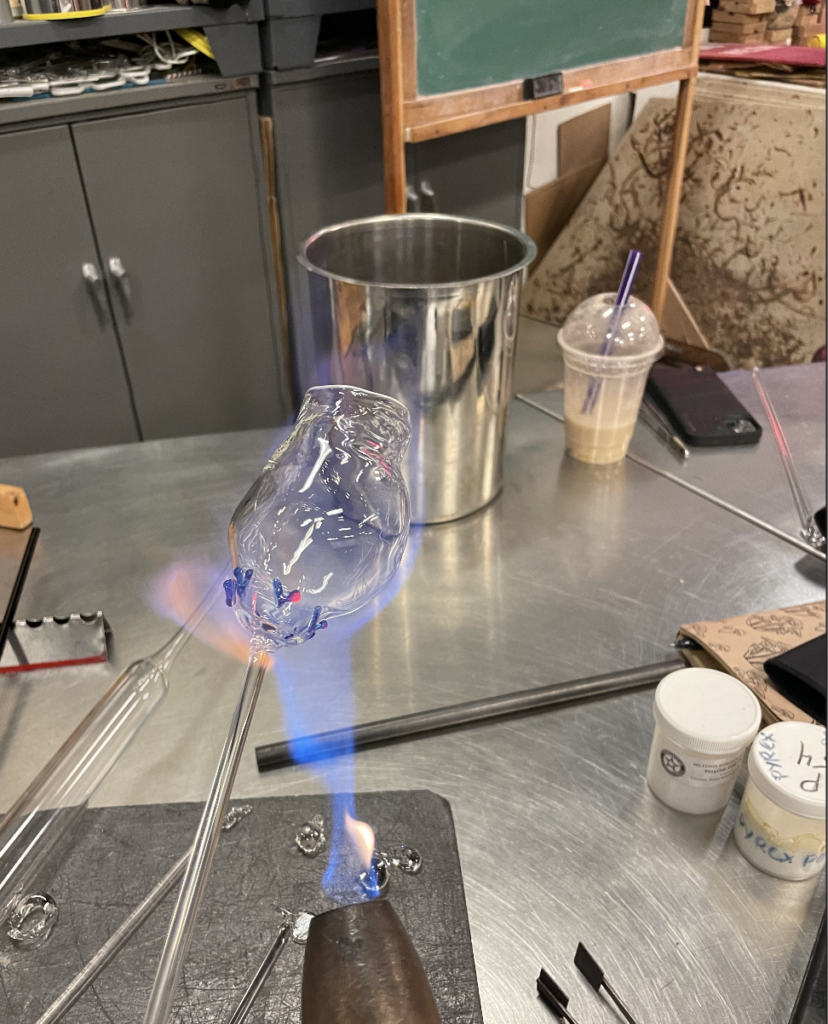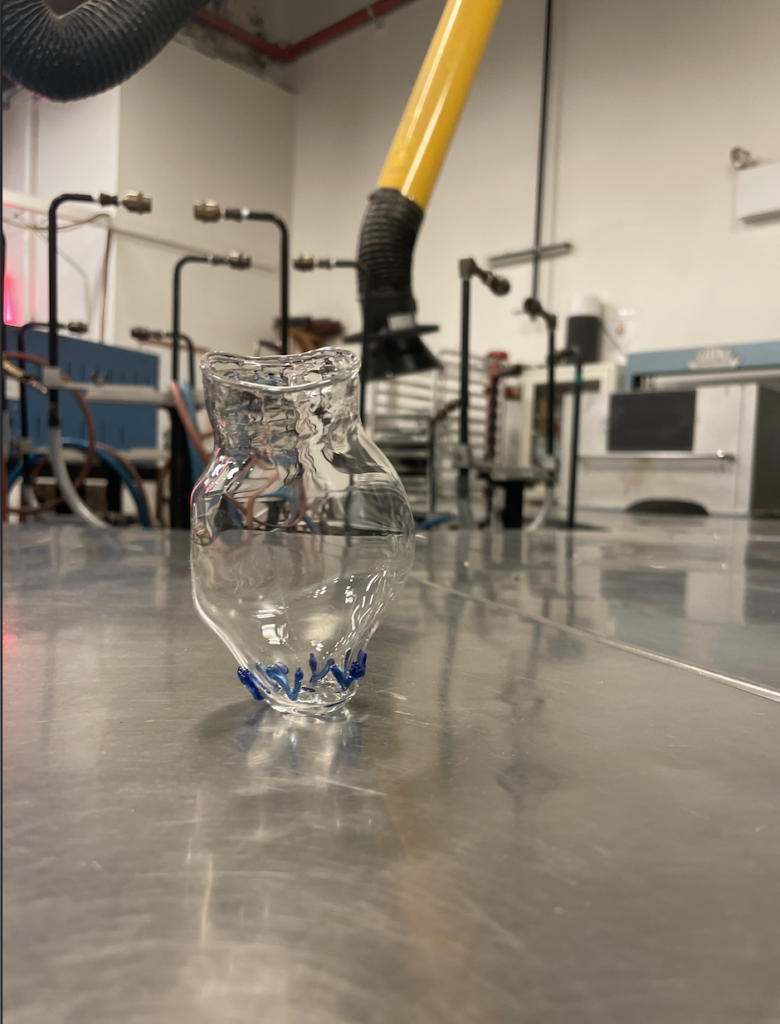Summary
June 15th Blog Post discussing obsidian and borosilicate glass.
This first month has been full of stops and starts. I took my first borosilicate glass class, and spoke at length with my teacher, Celeste Tsang, about her thoughts on using obsidian with borosilicate glass. She mentioned that I would need to provide my own crucible, which is a large ceramic, aluminum, or porcelain bowl that holds whatever glass substance one wants to melt. It lives inside a special kiln that can be opened and reach extremely high temperatures. I hadn’t realized how crucial the crucible was for melting obsidian. I had thought that I could melt small amounts of it using the lampworking or flameworking torch alone, but after speaking with Celeste, and understanding glass chemistry more, I see why this is a bad idea. Obsidian contains a lot of water and is more unstable than most glass types used in the studio, which means directly exposing it to a high temperature without raising it gradually could cause it to explode. While that would make for a fascinating paper, I do not believe that this would be good for my health or those around me. However, this class was incredibly informative and I learned a lot about using borosilicate glass, and gained skills to hopefully start working with obsidian soon.

Buying the obsidian has also been difficult because of learning about how different obsidians are easier or harder to work with. After speaking with researchers about sourcing different types of obsidian from different regions in North America, I have learned that it’s not enough to just simply buy a lot of the material and pray that it all is from the same place. There are various places one can source obsidian in North America, but the most stable is from California, in areas that are federally protected/where obsidian cannot be removed. This obviously makes complete sense, because if everyone could take rocks/obsidian from these places there would be none left. Furthermore, I am doing more research about this now, as obsidian is a religious/important substance for various Indigenous cultures, and it is disrespectful to remove it and utilize it in some cultures. Overall, this has led to me reflecting more on the extractive nature of the work I’m trying to do, and in science as a whole. Some questions I have been asking are: why is my research important? How am I situating myself in this complex history of resources? Who’s perspectives have I sought out, and why are there more scientific or historical sources than indigenous ones?
Overall, at the beginning of this research I am doing, I found many more scientific or historical representations of obsidian artifacts, but not a lot of primary sources about the obsidian from the cultures that made it. I will work in the coming month(s) to rectify this and cast a wider net to learn more about obsidian and volcanoes.

